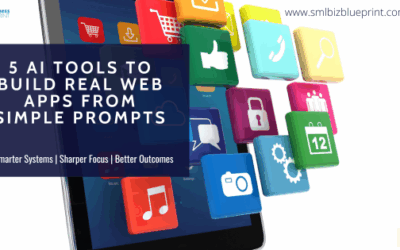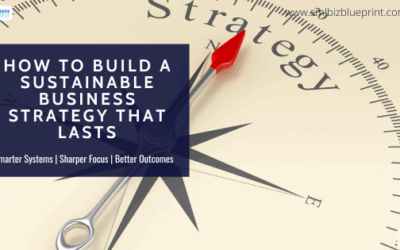In a fast-paced and ever-changing business landscape, staying ahead of the curve is crucial for long-term success.
To future-proof your business, it’s essential to regularly assess and adapt your strategies to meet new challenges and capitalize on emerging opportunities.

In this article, we will explore ten thought-provoking questions that can help you shape a resilient business strategy, enabling you to navigate the dynamic currents of the market.
By addressing these questions, you can ensure that your business remains competitive, customer-focused, and agile in the face of uncertainty.
#1 Is our business strategy aligned with our long-term goals?
To future-proof your business, it’s important to start with a clear understanding of your long-term goals.
Let’s take an example of a technology company that has set a long-term goal of becoming a leader in sustainable and eco-friendly solutions.
By aligning their business strategy with this goal, they prioritize research and development in renewable energy technologies and ensure their products and services are environmentally conscious.
This alignment allows them to position themselves as pioneers in sustainable technology, attracting eco-conscious customers and gaining a competitive advantage.
#2 Are we staying ahead of industry trends and disruptions?
Staying ahead of industry trends is essential for future-proofing your business.
For instance, consider the case of a retail clothing brand that closely monitors fashion trends and consumer preferences.
By leveraging data analytics and market research, they identify the growing demand for sustainable and ethically produced clothing.
Anticipating this trend, they proactively adjust their sourcing practices, invest in sustainable materials, and communicate their eco-friendly initiatives to customers.
As a result, they secure a loyal customer base and differentiate themselves from competitors who fail to adapt.
#3 Are we truly meeting the needs of our customers?
Meeting customer needs is a fundamental aspect of future-proofing your business.
Let’s look at the example of a software-as-a-service (SaaS) company that provides project management solutions.
Through customer surveys and feedback analysis, they discover that their customers desire a more user-friendly interface and enhanced collaboration features.
In response, they invest in user experience improvements, introduce intuitive collaboration tools, and provide regular updates based on customer input.
By actively listening to their customers and tailoring their offerings accordingly, they retain customer loyalty and attract new clients seeking user-centric solutions.

#4 Are we regularly tracking and analyzing our key performance indicators (KPIs) to ensure we’re on track to meet our goals?
Tracking and analyzing KPIs are crucial for evaluating your business’s progress and identifying areas for improvement.
Consider the case of an e-commerce company that sets a goal to increase customer retention.
By closely monitoring KPIs such as customer churn rate, average order value, and customer lifetime value, they gain insights into customer behavior and satisfaction.
With this data, they implement targeted retention strategies, such as personalized email campaigns, loyalty programs, and proactive customer support.
As a result, they witness a significant decrease in customer churn and a boost in customer loyalty and repeat purchases.
#5 Are we leveraging technology and data to drive informed decision-making and optimize our strategy?
Leveraging technology and data can significantly enhance your business strategy.
Take, for instance, a marketing agency that utilizes data analytics tools to analyze the performance of various marketing channels.
By tracking metrics such as conversion rates, click-through rates, and customer engagement, they identify the most effective channels for reaching their target audience.
Armed with this data, they reallocate their marketing budget to focus on high-performing channels, resulting in increased ROI and improved overall marketing effectiveness.
#6 Have we established a clear and consistent brand identity across all touchpoints and communications?
Maintaining a consistent brand identity is vital for building trust and recognition with your target audience.
Let’s look at the example of a luxury hotel chain that prides itself on delivering exceptional experiences and personalized service.
They ensure that their brand identity is consistently reflected across all touchpoints, from the elegant and sophisticated design of their hotels to the attentive and professional demeanor of their staff.
Their website, social media presence, and marketing materials all exude the same sense of luxury and exclusivity, reinforcing their brand image and attracting discerning travelers seeking a premium experience.

#7 Are we effectively communicating our value proposition to our target audience?
Communicating your value proposition clearly and effectively is crucial for standing out in a competitive market.
Consider the case of a software company that offers a project management tool specifically designed for creative teams.
They craft their messaging to highlight the unique features that cater to the specific needs of creative professionals, such as seamless file sharing, collaborative feedback loops, and intuitive design interfaces.
By tailoring their communication to resonate with their target audience, they establish themselves as the go-to solution for creative project management, successfully differentiating themselves from generic project management tools.
#8 Have we identified potential risks and developed contingency plans to address them?
Proactively identifying potential risks and having contingency plans in place is essential for future-proofing your business.
Let’s take the example of a manufacturing company that heavily relies on a single supplier for a critical component.
Recognizing the risk of supply chain disruption, they establish relationships with alternative suppliers and maintain buffer stocks to mitigate the impact of any unforeseen disruptions.
By having contingency plans in place, they ensure a continuous supply of components and minimize production delays, safeguarding their business from potential disruptions.
#9 Are we effectively managing and empowering our employees to execute our strategy?
Empowering employees and fostering a positive work culture are essential for executing your business strategy.
Consider the case of a technology startup that values creativity and innovation.
They provide their employees with dedicated time for personal projects and encourage collaboration through cross-functional teams.
By empowering their employees to explore new ideas and take ownership of their work, they foster a culture of innovation, resulting in breakthrough products and solutions that drive the company’s success.

#10 Have we considered external factors that could impact our strategy, and have we developed plans to address them?
Considering external factors and having plans to address potential disruptions is crucial for future-proofing your business.
Let’s examine the example of a travel agency that operates in an industry susceptible to geopolitical events and economic fluctuations.
They continuously monitor global political situations and economic forecasts to anticipate potential disruptions.
In response, they diversify their offerings by promoting domestic tourism and exploring emerging markets to reduce reliance on specific regions.
By staying informed and adapting their strategy accordingly, they navigate external challenges effectively and maintain stability in their business operations.
Future-proofing your business requires proactive evaluation, adaptation, and a commitment to meeting evolving market demands.
By addressing the ten thought-provoking questions outlined in this article, you can fortify your business strategy and position your company for long-term success.
Align your strategy with your long-term goals, stay ahead of industry trends, prioritize customer needs, leverage technology and data, maintain a consistent brand identity, and prepare for potential risks. Empower your employees and consider external factors that may impact your strategy.
By embracing these practices and continuously evolving, your business can thrive and remain competitive in a rapidly changing business landscape.
So, take the necessary steps today to future-proof your business and pave the way for a successful tomorrow.




